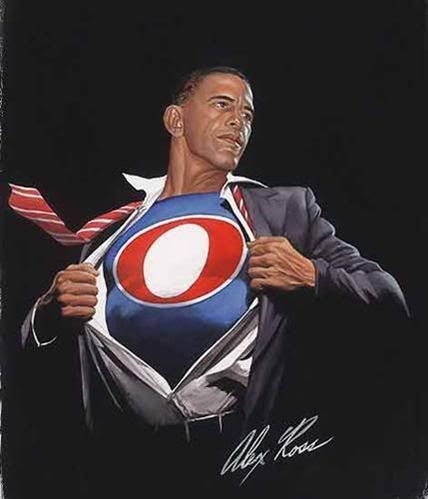
It’s not saying anything new to say that even a year and a half ago one could tell there was something different about the then-senator from Illinois. Hell, lots of people have written about it, most probably better than I ever could. But what really struck me, especially around this time last year, was the way the comic people jumped all over Obama.
Even before he was elected, you had successful comic characters (and by extension, one would think their creators) making no bones about their chosen candidate:
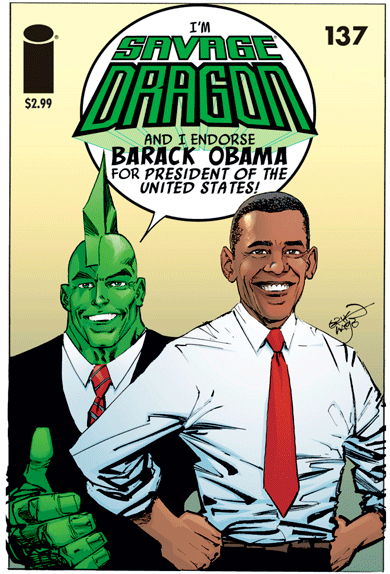
When he did get elected, it was unprecedented. Sure,other presidents had appeared in comics before, but none like this. In terms of sheer volume and scope, Obama (or at least his image) was blazing all kinds of new trails.



What’s really interesting is seeing how the interpretations developed over time. While most comics were content to simply involve the president in a storyline or two, Devil’s Due took it a step further

…and then Antarctic Press took it even further than that:

Even his detractors, it seemed, couldn’t help but fall back on comic book imagery:

Taking all of this in, it’s easy to see that Obama isn’t just the president, he’s a full-blown Pop Culture Phenomenon. I know, a little late to the game with that one, huh? But seeing it laid out like this raises certain questions about not just the president, but his fans as well.
There are certain parallels one can draw between President Obama and Tiger Woods – and most are probably too obvious to even point out. But the main similarity (for the sake of this discussion) is the way with each that the Image overlaps with the Actual Human Being.

With his recent domestic troubles and subsequently dodgy behavior, it seems that Tiger Woods’ biggest problem of late is that his dramatically adult personal life is clashing with his image as the clean, driven, “aw shucks” kind of guy who was as charming as he was good at golf. (Think back to that Dave Chapelle sketch of Tiger Woods awkwardly declaring, “I’ve always wanted to say this – fer shizzle!”) With people learning that off the field Woods is just like lots of other celebrities – all too fallible – his popularity and position in the public’s good graces is in question.
We’re seeing some hints of this with Obama in the political field as well. With the troop escalation in Afghanistan, the total mess the health care debate has become, the continued corporate bonuses, etc., a lot of people on the political left are starting to feel disillusioned with Obama. Put simply, they’re finding the man in the office isn’t the same guy who was in that Spider-Man issue.

One thing America likes to do to its celebrities is, after having built them up, to tear them down. Tom Cruise certainly got a lot more press after jumping on Oprah’s couch than he did before that. So what happens when the celebrity happens to be the man in charge of running the country? What happens when his comic stops selling? What happens when the Symbol of Hope turns out to be just another guy in a suit doing a job?
What if Clark Kent really isn’t Superman?

Or conversely, will the Idea of Barack Obama overshadow the man to the point where all we have left is the image, devoid of any but the most basic associations? Will Sheperd Fairey’s famed “Hope” poster simply become the newest perennial t-shirt design?
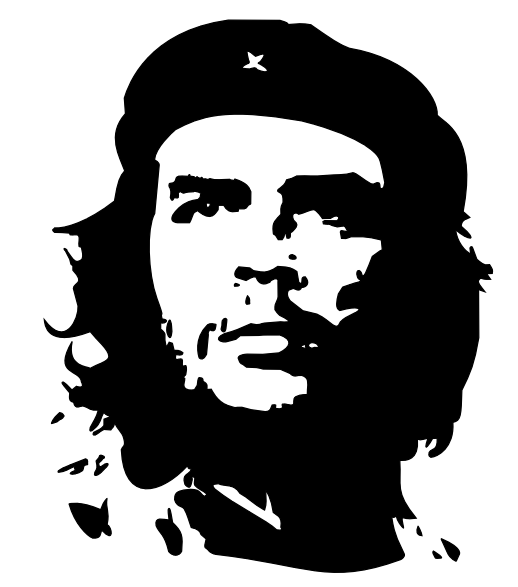
(Please note, I’m not trying to make any overt political statements, but more examining the whole person/persona issue when played out in four colors.)







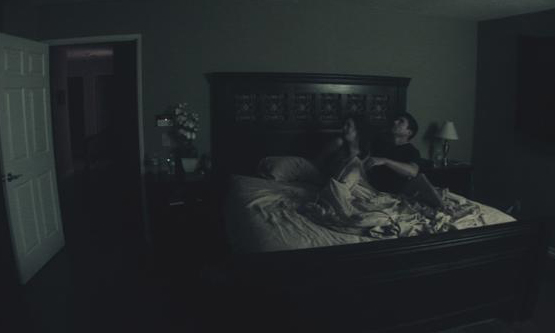





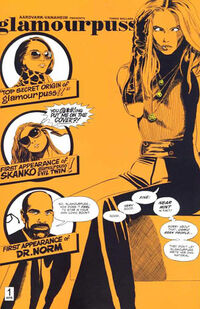
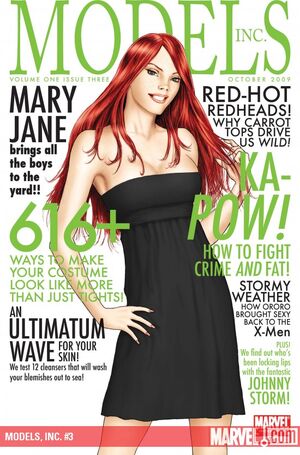

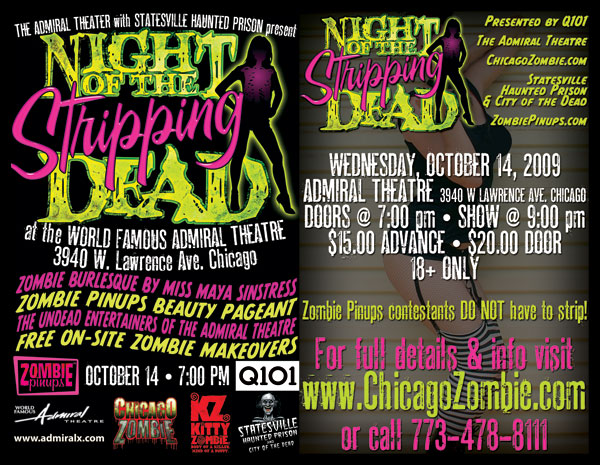

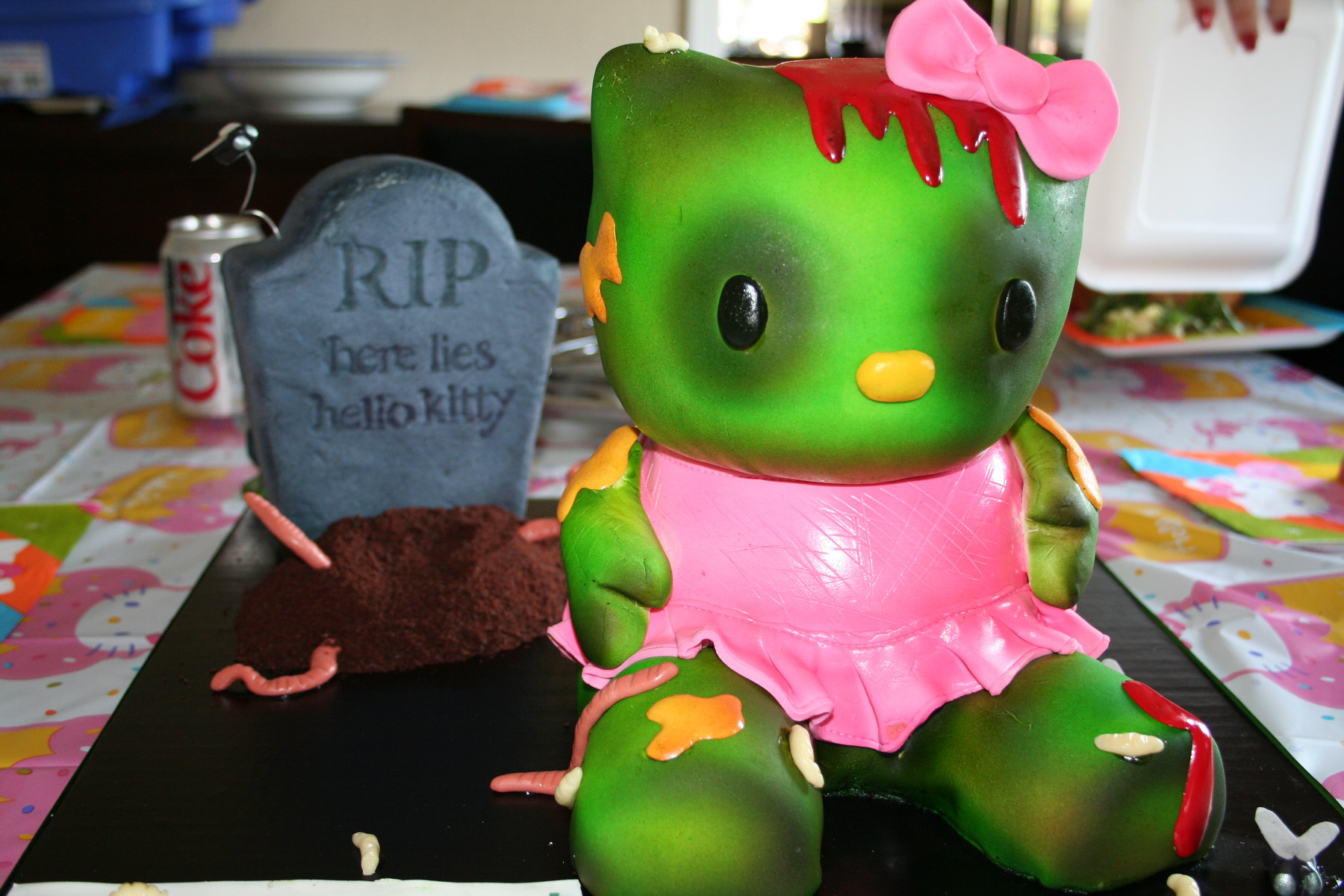



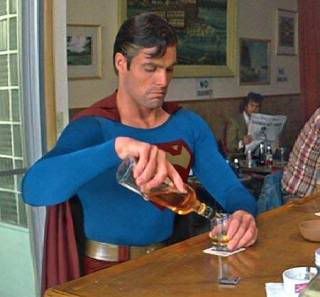










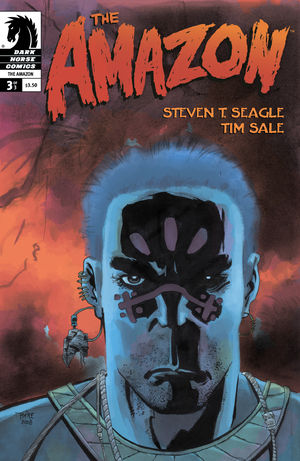 The Amazon #3: In 1989 writer Steven T. Seagle and artist Tim Sale collaborated on a miniseries about a reporter who goes into the Amazon rainforest tracking the story of a missing logger. This just happens to coincide with a series of attacks on a logging camp attributed to locals by the Tanando, the spirit of the forest. What ensues is a Heart of Darkness-style trip down the river, where the reporter encounters the depths and riches of the Amazon, and finds the truth about his story is more complex than he’d thought.
The Amazon #3: In 1989 writer Steven T. Seagle and artist Tim Sale collaborated on a miniseries about a reporter who goes into the Amazon rainforest tracking the story of a missing logger. This just happens to coincide with a series of attacks on a logging camp attributed to locals by the Tanando, the spirit of the forest. What ensues is a Heart of Darkness-style trip down the river, where the reporter encounters the depths and riches of the Amazon, and finds the truth about his story is more complex than he’d thought. Phonogram: The Singles Club #2: The first Phonogram series, Rue Britannia, was brilliant on many levels – not just in the way writer Kieron Gillen seamlessly interwove the worlds of magic and the Britpop movement of the 90s (as well as music in general), but also that it was filled with strong characters and an emotional depth that made the story satisfying regardless of whether you knew the music or not. Or so it seemed; having been– okay, continuing to be a huge Britpop fan, I really have no idea if someone not familiar with the intricacies of British guitar rock circa 93-97 would be lost or not. But Gillen did provide extensive liner notes and commentary in the back, which one would hope would be effective. Then there’s Jamie McKelvie’s art, which is clean and crisp and just about perfect in every way.
Phonogram: The Singles Club #2: The first Phonogram series, Rue Britannia, was brilliant on many levels – not just in the way writer Kieron Gillen seamlessly interwove the worlds of magic and the Britpop movement of the 90s (as well as music in general), but also that it was filled with strong characters and an emotional depth that made the story satisfying regardless of whether you knew the music or not. Or so it seemed; having been– okay, continuing to be a huge Britpop fan, I really have no idea if someone not familiar with the intricacies of British guitar rock circa 93-97 would be lost or not. But Gillen did provide extensive liner notes and commentary in the back, which one would hope would be effective. Then there’s Jamie McKelvie’s art, which is clean and crisp and just about perfect in every way.
 The Umbrella Academy: Dallas #6: The second series featuring Gerard Way and Gabriel Bá’s dysfunctional family/super-team ends with a bang – several, actually. Picking up where the first series left off, Dallas finds the team in a collective state of despondency after one of their own tried to destroy the world. Each member is pulled – sometimes dragged – out of their individual states when a pair of sugar-addicted assassins with oversized cartoon-character masks try to track down UA member Number Five, whose future/past self (oi, time travel) is supposed to assassinate John F. Kennedy. Along the way, team member Séance meets a cowboy-on-horseback God, team leader Space Boy fights monsters during the Vietnam War, and the Earth blows up. And we learn the secret of one diner’s amazing apple pie.
The Umbrella Academy: Dallas #6: The second series featuring Gerard Way and Gabriel Bá’s dysfunctional family/super-team ends with a bang – several, actually. Picking up where the first series left off, Dallas finds the team in a collective state of despondency after one of their own tried to destroy the world. Each member is pulled – sometimes dragged – out of their individual states when a pair of sugar-addicted assassins with oversized cartoon-character masks try to track down UA member Number Five, whose future/past self (oi, time travel) is supposed to assassinate John F. Kennedy. Along the way, team member Séance meets a cowboy-on-horseback God, team leader Space Boy fights monsters during the Vietnam War, and the Earth blows up. And we learn the secret of one diner’s amazing apple pie. The Unwritten #1: Tommy Taylor is a ridiculously popular series of books about a teenage wizard. Tom Taylor is the man who, as a boy, was the inspiration for the books. Or so the story goes. Except that a woman shows up at a press conference with evidence to the contrary. And one of Tommy Taylor’s nemeses shows up to take out Tom Taylor. And there’s still the mystery of why Taylor’s father, the author of the Tommy Taylor series, disappeared. And what does this have to do with a map?
The Unwritten #1: Tommy Taylor is a ridiculously popular series of books about a teenage wizard. Tom Taylor is the man who, as a boy, was the inspiration for the books. Or so the story goes. Except that a woman shows up at a press conference with evidence to the contrary. And one of Tommy Taylor’s nemeses shows up to take out Tom Taylor. And there’s still the mystery of why Taylor’s father, the author of the Tommy Taylor series, disappeared. And what does this have to do with a map? Final Crisis Aftermath: Escape #1: Have you ever wondered what it would be like if Franz Kafka and James Joyce co-wrote an episode of The Prisoner using characters from the DC Universe? “Who hasn’t?” you say. Well, now this dream has finally been realized, thanks to FCA:E. The issue begins with former secret agent Nemesis awakening in an undesignated prison cell, surrounded by three women with bobs and mod dresses offering to be his friend. Now, while Your Humble Blogger would call this Heaven, Nemesis is obviously not happy with the situation, especially given the distinct lack of humanity present in his “friends.” His attempted escape leads through an unmarked hallway where he encounters a very ominous looking Mr. Terrific. Then Nemesis runs across Count Vertigo... that's where the acid kicks in*.
Final Crisis Aftermath: Escape #1: Have you ever wondered what it would be like if Franz Kafka and James Joyce co-wrote an episode of The Prisoner using characters from the DC Universe? “Who hasn’t?” you say. Well, now this dream has finally been realized, thanks to FCA:E. The issue begins with former secret agent Nemesis awakening in an undesignated prison cell, surrounded by three women with bobs and mod dresses offering to be his friend. Now, while Your Humble Blogger would call this Heaven, Nemesis is obviously not happy with the situation, especially given the distinct lack of humanity present in his “friends.” His attempted escape leads through an unmarked hallway where he encounters a very ominous looking Mr. Terrific. Then Nemesis runs across Count Vertigo... that's where the acid kicks in*. The Punisher: Frank Castle #70: Any issue of the Punisher that opens with a Mexican stand-off between FBI agents, gang bangers and the Russian Mafia is pretty much an automatic win. Crime novelist Duane Swierczynski has delivered the best post-Garth Ennis Punisher storyline so far with this conclusion to his “Six Hours to Kill” arc. For those needing a refresher, the Punisher follows a ring of criminals to Philadelphia, where he is kidnapped and injected with a drug he’s told will kill him in six hours; for the antidote, he merely has to kill a particular mob target. This being the Punisher, he rejects the deal, and a night of mayhem and bloodshed ensues. Swierczynski succeeds in balancing the humor, twists, and straight-up carnage that made this one of the best books for misanthropic thrills. If you’ve missed the previous issues then catch the trade (no doubt coming soon).
The Punisher: Frank Castle #70: Any issue of the Punisher that opens with a Mexican stand-off between FBI agents, gang bangers and the Russian Mafia is pretty much an automatic win. Crime novelist Duane Swierczynski has delivered the best post-Garth Ennis Punisher storyline so far with this conclusion to his “Six Hours to Kill” arc. For those needing a refresher, the Punisher follows a ring of criminals to Philadelphia, where he is kidnapped and injected with a drug he’s told will kill him in six hours; for the antidote, he merely has to kill a particular mob target. This being the Punisher, he rejects the deal, and a night of mayhem and bloodshed ensues. Swierczynski succeeds in balancing the humor, twists, and straight-up carnage that made this one of the best books for misanthropic thrills. If you’ve missed the previous issues then catch the trade (no doubt coming soon). The Walking Dead #61: Seriously, if you’re not reading this book, just start already.
The Walking Dead #61: Seriously, if you’re not reading this book, just start already.
